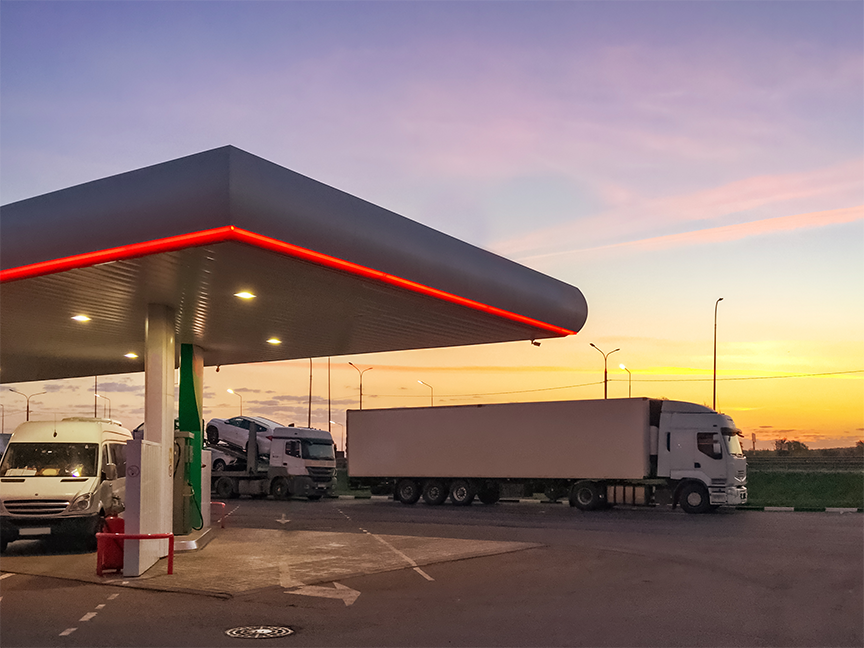
Look around you: Everything you touch likely arrived on a truck. Delivery vehicles are replacing storefronts as a ubiquitous presence in suburban America.
With the majority of Americans in various states of lockdown since early 2020, e-commerce has experienced a decade of growth in a matter of months. Consumers tried multiple new delivery services during the pandemic, and have no plans for going back to the old way of doing things. There’s never been greater demand for every kind of product to be delivered directly to our doors, or more pressure on the supply chain that gets them there.
Add to that the recent news about supply chain shortages and port congestion, and society may have the perfect fulfillment storm on its hands. The issues are complex, and their solutions now have to include stricter environmental standards and ambitious climate targets.
The surge in demand for goods, and society’s response thus far, has revealed deep cracks in how America manages one of the biggest, costliest parts of the entire supply chain: last-mile delivery.
The last mile is fraught with complexities from operational issues (how to get diapers to you by 2 p.m. today) to environmental risk and liabilities (how to comply with the strictest air quality standards in modern history). These complexities are forcing retailers and logistics providers to take a hard look at both the efficiency and impact of last-mile services.
It starts by opening our ears to the data. Delivery telematics can provide fleet managers with a comprehensive overview of their energy and equipment usage, including labor cost savings, vehicle refueling trends, wear and tear, and energy spend. Just scratching the surface of this data reveals copious savings and efficiencies.
For example, fleet drivers on average waste 20 minutes at the gas station. And because fuel stops often occur during rush hour, resulting in additional left turns and U-turns, each stop increases road congestion. This slows down the entire traffic grid, resulting in second-order emissions impacts by other vehicles. By eliminating this errand completely, drivers slice two miles off route travel. And the savings add up, reducing fleet miles by 3% for the average fleet operator. The resulting boost in supply chain efficiency also allows companies to save on wear and tear, and thus maintenance.
Most importantly, drivers can gain 7% more productivity by foregoing that trip in favor of tech-enabled fuel delivery services. For many fleets, the added time equates to 10 additional packages delivered, one more lawn mowed, or five more school bus stops. And because energy delivery is done during a fleet’s downtime, when drivers arrive at the yard, their vehicles are ready to go.
As environmental regulations get stricter and fleet managers become more aware of their responsibility to manage their emissions, gas station visits entail a heavy cost. On average, three pounds of CO2 are released per month by each vehicle due to fueling stops.
Cutting out the gas station can mean significant emissions reduction, helping fleets meet regulations while still servicing the needs of their customers.
Mobile fueling can help fleets limit their employees’ exposure to risk by keeping them off the gas station forecourt, where tens of thousands of accidents happen every year. Trusting fuel delivery to skilled expert operators can exceed every safety expectation, and ensure adherence to the highest standards, such as air quality requirements, Federal DOT & EPA standards, and NFPA requirements.
Much of this can be achieved without increasing costs. Now that fleets are everywhere, energy delivery services can build economical, sustainable routes to service this ballooning economy. These services can also provide renewable energy options, delivered directly to fleet vehicles.
As more companies make the transition to hybrid and mixed energy fleets, optimizing for cost, sustainability and reliability will become even more essential. A data-driven, connected energy network for transportation can improve last-mile efficiency, environmental impact and the bottom line.
Frank Mycroft is co-founder and CEO of Booster, an energy delivery and technology company serving commercial fleets.







